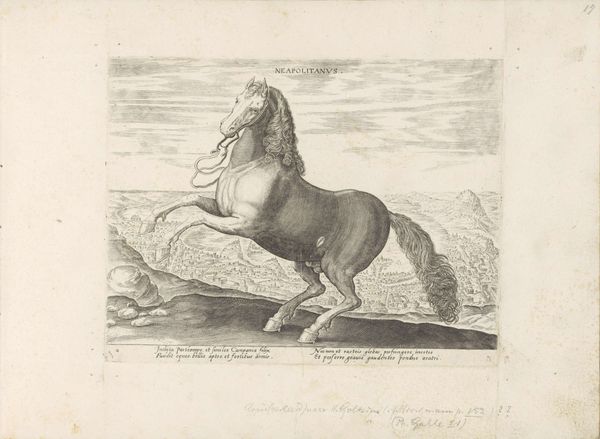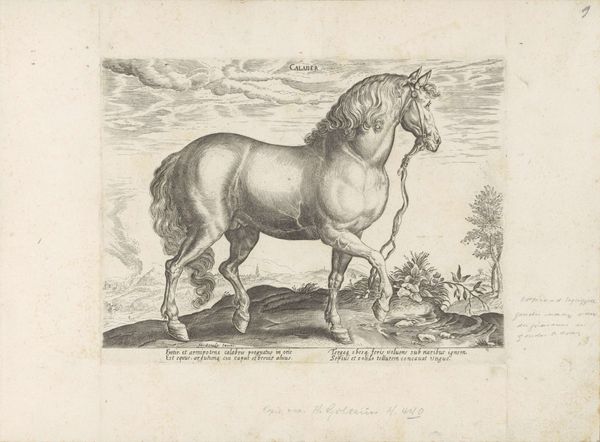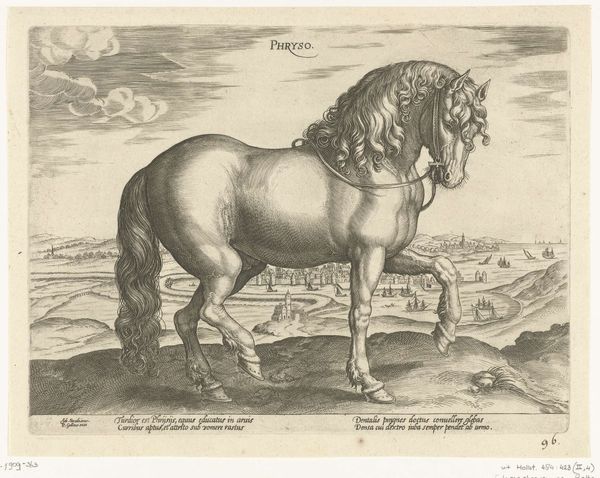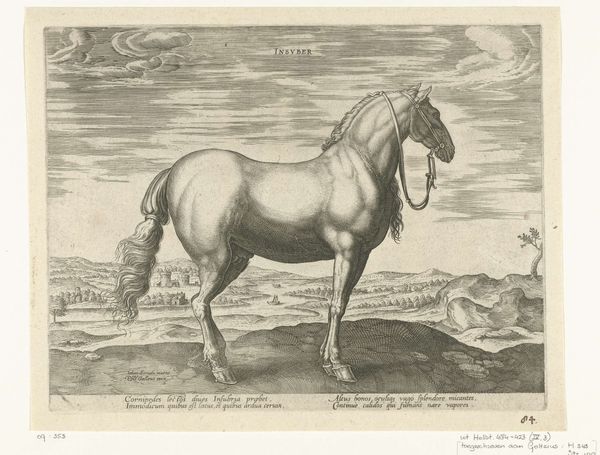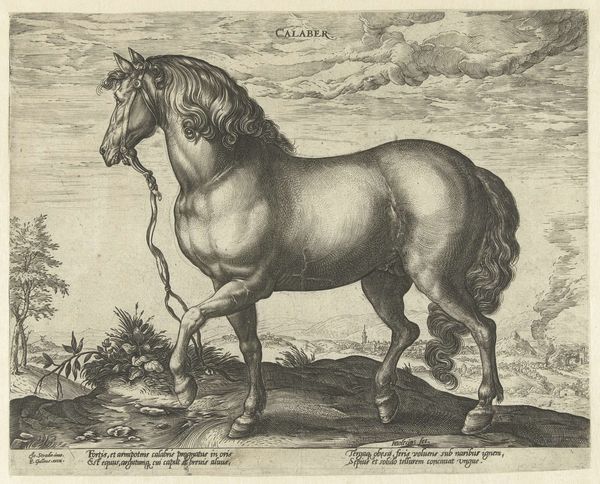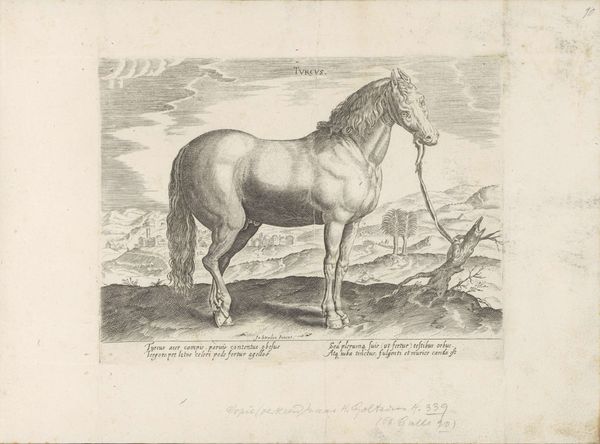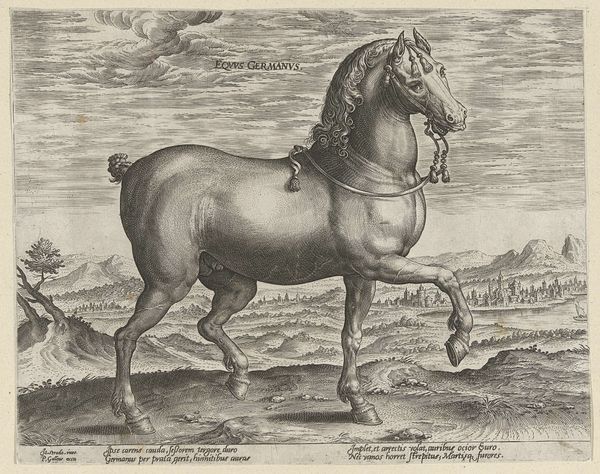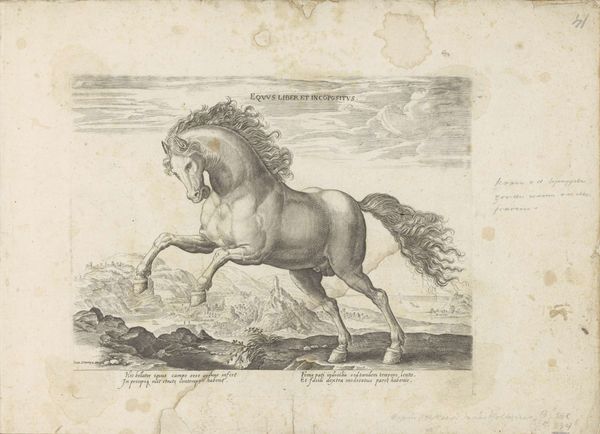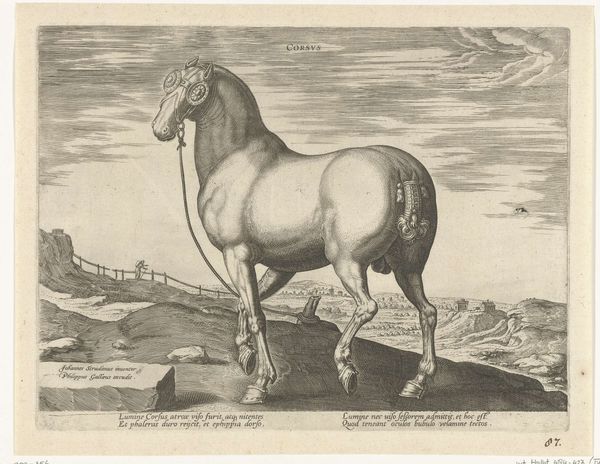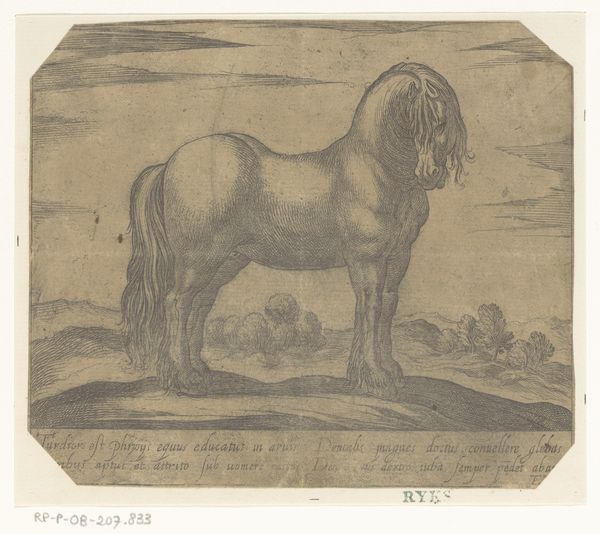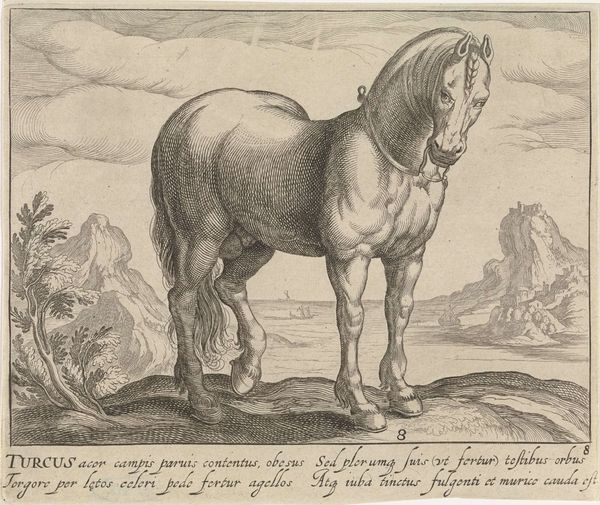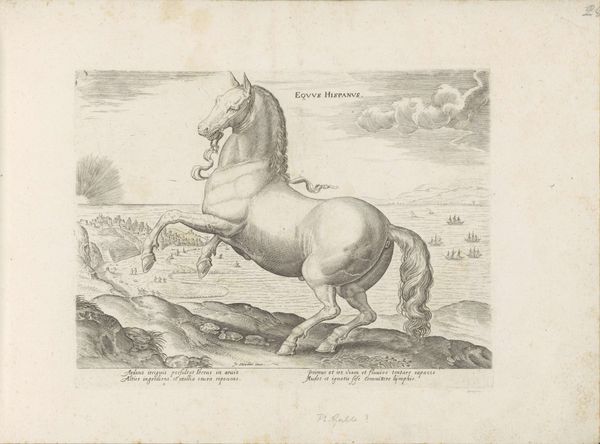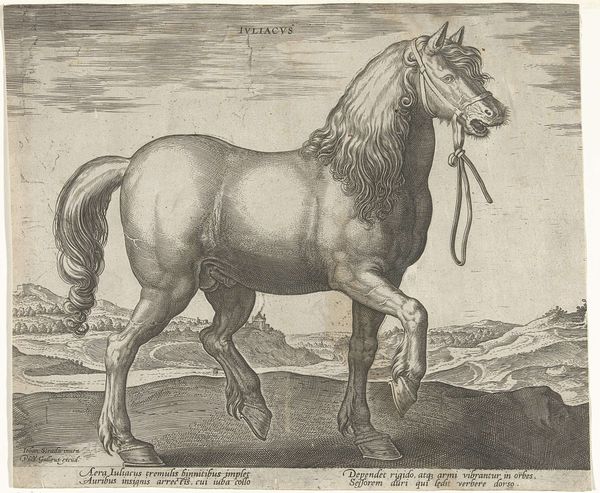
print, engraving
#
medieval
# print
#
landscape
#
figuration
#
horse
#
engraving
#
realism
Dimensions: height 209 mm, width 263 mm
Copyright: Rijks Museum: Open Domain
Curator: Before us, we have "Paard uit Friesland," or "Horse from Friesland," an engraving dating to before 1648, a work residing here at the Rijksmuseum, but created by an anonymous hand. Editor: Magnificent! Its lines evoke a strange sense of freedom and confinement simultaneously. That elaborate mane – pure, wild poetry – but those restraints speak of human control, the picturesque but working Friesian horse in service to mankind. Curator: Absolutely. Equestrian portraiture of this era served as a powerful symbol of status and control, think about how powerful horses are on battlefields, their link to aristocracy and military strength. Displaying a prized steed also spoke volumes about an owner's wealth and taste, and the ability to control a prized, almost war-like beast. Editor: And see how this unknown artist captured the essence of the Frisian horse. So muscular. The lines defining the shadows – they're practically sculpting light on the animal. Look at that powerful chest, the curves. It has the most gorgeous baroque body. It’s as if the horse could rear up, leap off the paper, and gallop right out of here and back into nature. Curator: Indeed. And engravings like these were immensely popular for circulation. This piece might have found its way into the homes of nobles or wealthy merchants, quietly reinforcing certain hierarchies of the period. Also, remember that prints allowed for wider dissemination of imagery than paintings; one horse could theoretically be "owned" by thousands, via this representational form. Editor: It makes me ponder our relationship with animals in art – from cave paintings to Stubbs' anatomical precision to the abstract deconstructions we see now. Isn’t it interesting that even when seemingly objective, the portrayal of an animal carries so much of our projection of meaning, ideas of domestication, work, class, dreams? Curator: That's it exactly. Images, even those of horses, always operate within networks of power and display, shaping cultural understandings and solidifying social positions. What starts out seeming objective can reflect ideologies in ways both subtle and profound. Editor: Profound indeed. Who knew looking at a horse could reveal so much! A snapshot into another era that raises larger existential questions about artifice and our place in this weird web of culture, commerce, control, and yes, even our long, complicated partnership with these incredible animals.
Comments
No comments
Be the first to comment and join the conversation on the ultimate creative platform.
